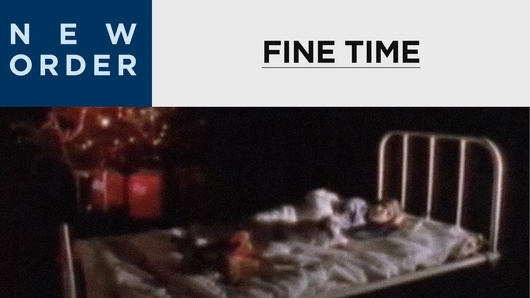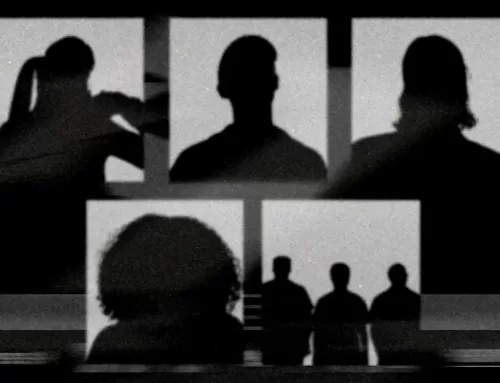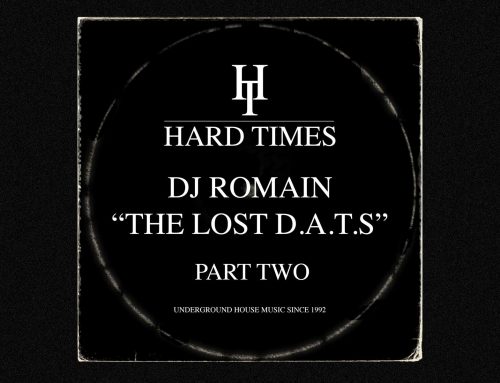
Released on 30th January 1989, New Order’s fifth album is a sun-flushed pinnacle of dance rock, directly inspired by the hedonistic energy of Ibiza’s burgeoning club scene of the time. 35 years on, with the help of the album’s engineer Michael Johnson, Ben Cardew reflects on its legacy, and its influence on the acid house era
If you want to understand British music’s generational leap from punk to acid house, there is no better lead than New Order’s ‘Technique’. Released on 30th January 1989, the group’s fifth album is a sun-flushed pinnacle of dance rock, in which synths, drum machines, guitars and bass combine to make a record that breathes in the salty tang of Ibiza beaches and ecstatic nightclub experiences.
That might sound like an ungainly stretch for a group born from Manchester’s 1970s punk scene, but ‘Technique’ showcased how far New Order had come from their origins in Joy Division, a group whose sound was seeped in paranoia, violence and dark Salford streets.
New Order emerged from Joy Division following the death of singer Ian Curtis in 1980. Nine years later, surviving members Bernard Sumner, Peter Hook and Stephen Morris, now joined by keyboardist Gillian Gilbert, released their first No.1 album. It ushered in a year of acid house hits and indie dance crossovers, including The Stone Roses’ debut album, Happy Mondays’ ‘W.F.L.’, and 808 State’s ‘90’.
Crucially, though, it also helped to illustrate Ibiza’s role in shaping a particular strain of British dance music, taking inspiration from the same DJs and clubs that drove Paul Oakenfold and co. to bring Balearic Beat to London in the late 1980s, which at least partially fuelled the acid house explosion.
In the liner notes for the album’s 2008 reissue, Hook, who played bass with New Order until 2007, emphasised that ‘Technique’ is “not an Ibizan dance record”. But then, perhaps, he would say that. As New Order’s most resolutely rock-oriented member, Hook regularly locked horns with its electronic and dance-focused wing, lead by guitarist and singer Sumner, and referred to the album as “an epic power struggle between the sequencers and me”.
“You’ve always got this tension in New Order — or you always had before Hooky left — of Bernard pulling one way and Hooky pulling the other,” says engineer and producer Michael Johnson, who worked on several New Order records, including ‘Technique’. “That tension is what made them great.”
“Bernard was, by that stage, really into programming everything and having everything all sequenced. Having Hooky put some bass on there… He [Sumner] didn’t seem to be all that keen on.”
Dance record or not, Ibiza is at the heart of ‘Technique’. In April 1988, New Order, who were by then one of Britain’s biggest bands thanks to hits like ‘Blue Monday’ and ‘True Faith’, flew to the Balearic island to start recording, choosing Ibiza’s Mediterranean studio over Peter Gabriel’s Real World in Bath on the grounds that the former had a swimming pool.
Mediterranean also had a 24-hour bar and easy access to Ibiza clubs like Amnesia, where DJs like Alfredo served up Balearic Beat until the not-so-early hours of the morning. Johnson recalls visiting one Ibiza club with the band that didn’t open until 9 AM.

“There would be no lyrics, probably not even a melody, but there’d be a beat and a bassline perhaps, or some sort of germ of an idea. And then we worked on all the songs in Ibiza. They were all on the go, so it was definitely inspired and influenced by what they were doing and hearing in Ibiza.” — Michael Johnson, engineer on ‘Technique’
With such distractions on hand, New Order didn’t actually end up recording that much music in Ibiza. “It was the beginning of us not being together in the studio when we were doing things,” Gilbert explained in the liner notes of the ‘Technique’ reissue. “It was like, ‘Oh you do your drums today, and I’ll do vocals tonight…’ The songs were sort of there but there were huge chunks missing.”
Most observers claim that the band completed about 20% of ‘Technique’ in Mediterranean — though Johnson says it was more — with the real work happening later in Real World. “They weren’t concentrating on the recording like previous albums, where it was quite intense and we’d get stuff done,” Johnson explains. “They were out partying a lot of the time, so it was a lot more relaxed and slow… But we did get quite a bit done.”
And what New Order did do in Ibiza was still crucial to the resulting album’s success. The perfectly judged house-rock fusion of opener ‘Fine Time’ was demoed in Ibiza, as were rough versions of ‘Mr Disco’ and ‘All The Way’. Stephen Morris also completed a lot of his drum tracks on the island.
More importantly, the group drank in the inspiration of the Ibizan club scene and the fiercely diverse music its DJs spun. “We had expected to hear a lot of acid house music when we got to Ibiza because that had taken off in Manchester two to three months before we left, but we didn’t — we were hearing something called Balearic Beat,” Sumner once said at the International Music Summit in Ibiza.
Johnson says that the music in Ibiza clubs was “very eclectic, all sorts of stuff”. “It certainly wasn’t just house music or anything,” he adds. “I don’t think there was a particular style. It was just an attitude where they could play anything.”
‘Technique’ starts with the hissing of a drum machine and ends 39 minutes later with a slow fade of electric guitars, its genre-agnostic point perfectly made. Some songs that are more rock, like ‘Guilty Partner’ or ‘Run’, and others are more rave, like ‘Fine Time’ or ‘Round & Round’, but they are rarely so set in their ways as to suggest a devotion to one side of the musical spectrum. ‘Round & Round’, for example, starts with the heavy bass drum pulse of house music and a nerve shredding keyboard riff, only for Hook’s wandering bass guitar to throw a very human element of rock distraction into the mix.
This indifference to genre barriers is very 1980s Ibiza; the album’s liquid grooves reflect the island’s ultra-liberal club spirit. New Order, Johnson says, used to come up with the basis of songs in their Manchester rehearsal studio, but they really came together on the island. “There would be no lyrics, probably not even a melody, but there’d be a beat and a bassline perhaps, or some sort of germ of an idea. And then we worked on all the songs in Ibiza,” he says. “They were all on the go, so it was definitely inspired and influenced by what they were doing and hearing in Ibiza.”

After four inspirational months in Spain, New Order returned to the UK to finish the album in Real World Studios, but they brought the Ibiza spirit with them. “They used to clear off to London to go clubbing all the time,” says Johnson, with Spectrum — often called London’s first acid house club — a popular destination.
‘Fine Time’ was released as the first single from ‘Technique’ in November 1988. Coming a few months after the summer of acid house — and with brilliant remixes from Chicago’s Steve “Silk” Hurley — it hit No. 11 in the UK charts (and No. 20 in Spain). Post-release single ‘Round & Round’ was a hit in the charts and in the clubs, thanks to remixes from Detroit techno pioneer Kevin Saunderson.
Saunderson and Hurley are electronic music legends, but the fact that their remixes had such an impact without making significant changes to New Order’s original versions is also testament to how much the band had tapped into the dance zeitgeist. That New Order were also part owners of Manchester’s Haçienda, one of the UK’s most important clubs, certainly helped in keeping their collective ear to the ground.
Despite their origins in Manchester, Salford and Macclesfield, New Order were never exactly a Madchester band. They stood aloof from the wash of indie dance acts who flooded the charts from 1989 to 1991, but the influence they had on these bands was nonetheless enormous. Three decades on, New Order are still an influence on bands like Water From Your Eyes, Nation of Language and pretty much anyone who has ever mixed drum machines with guitars. And ‘Technique’ remains the height of their radical powers.
If all you know of Ibiza is Sven Väth and Solomun bashing out the beats ’till all hours (and there’s nothing wrong with that, of course) then perhaps ‘Technique’ won’t resonate with you as a Balearic classic. But this album taps into something different: the inclusive, decadent spirit of Ibiza’s earlier heyday, which first gave it such an important place in dance history.
“When I listen to ‘Technique’, all I can remember is coming home at 3 AM to blinding light sunshine,” Morris explained to The Fader in 2015. “Even though it’s not a dancing record, ‘Dream Attack’ reminds me of coming home from a club in Ibiza more than any of the music that I listened to there.”
What, in the end, could be more Balearic than that?






![Carl Cox says his Ibiza residency at [UNVRS] will be a “whole new world” (DJ Mag)](https://www.myhouseradio.fm/wp-content/uploads/2025/04/carl-cox-1.jpg-500x383.webp)
Leave A Comment
You must be logged in to post a comment.